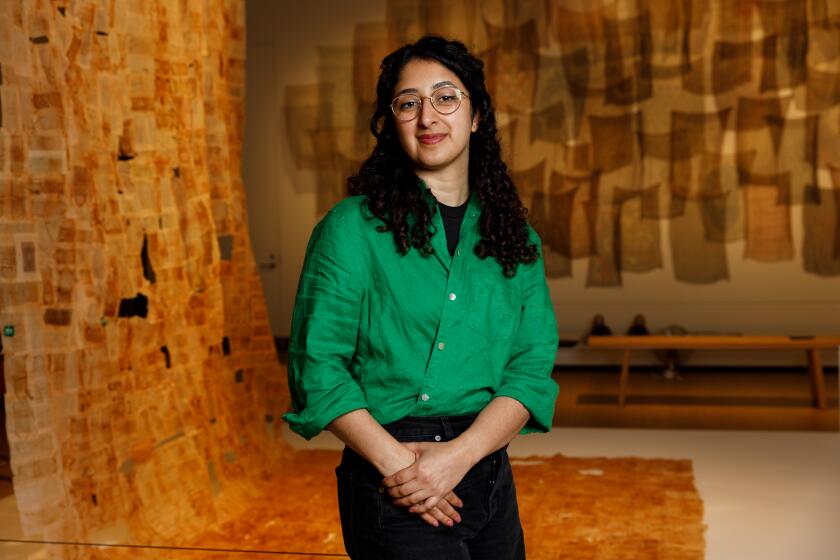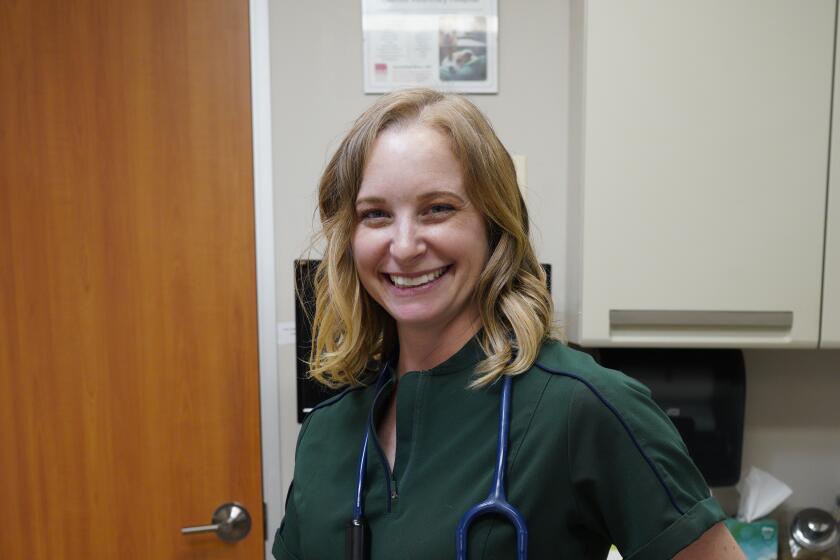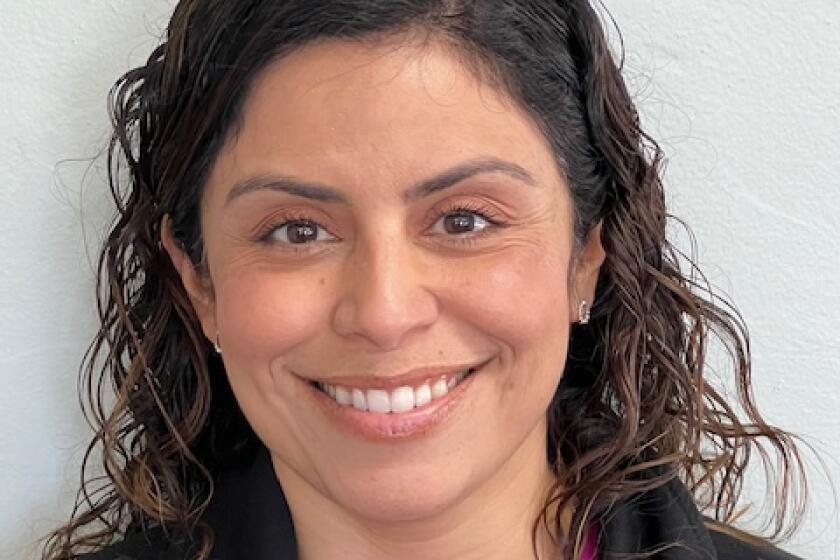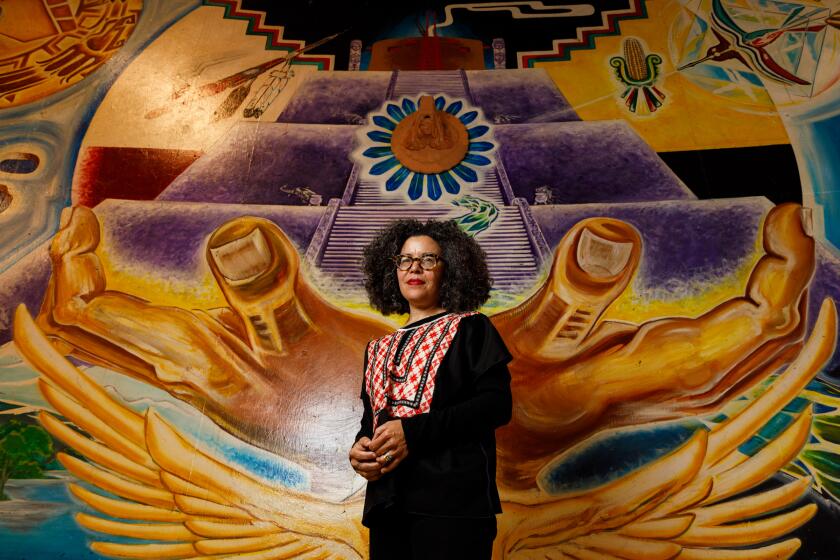Through food, self-trained chef shares her culture

Christy Innouvong-Thornton is deputy director and co-founder of Courageous Kitchen, a food education nonprofit. She’s also a participating chef in the San Diego Asian Film Festival’s kick-off event, Chew The Scene, on Oct. 10
In a celebration of both food and film, Christy Innouvong-Thornton will be among 20 chefs telling stories through their food at the annual Chew The Scene event on Thursday to kick off the annual San Diego Asian Film Festival in November. Born and raised in Seattle to refugee parents from Laos, she helped found the food education nonprofit Courageous Kitchen in 2013 from her condo in Bangkok.
“I was volunteering, teaching weekly English classes to a small group of asylum seekers and refugee students. …The majority of the students were Hmong from Vietnam, Pakistani, Sri Lankan and Congolese. Before the English lesson began, I would cook dinner for the children. Naturally, they were more interested in the food than the English lesson, so I began having them cook with me,” she says. “I had this ‘aha!’ moment when I realized that imposing my language on them was not a necessity if their basic human needs weren’t being met. I had to check my privilege and meet them where they were at.”
Once she did that, the response was huge. She found her students to be more engaged and eager to learn, and she started teaching weekly cooking lessons in English, which led to attention from chefs, farmers and schools. She’ll be sharing the work of Courageous Kitchen and her own family history with a comfort food dish that reminds her of home during Chew The Scene at the San Diego Natural History Museum.
Innouvang-Thornton, 34, lives in Mission Valley with her husband and serves as deputy director of Courageous Kitchen, managing programming in the U.S., developing curriculum and working on a cookbook. She took some time to discuss the work of her organization, the importance of Asian media representation, and the influence both of these things have had on her in her life.
Q: Tell us about your work with Courageous Kitchen.
A: Our organization uses nutrition as a restorative practice to make the world a braver, safer and healthier place. We are particularly concerned about the effects of malnutrition on youth from migrant backgrounds; traumatized, internally displaced persons; and mothers with young children. Through nutrition education and technology, Courageous Kitchen’s culinary programs and direct, hands-on approach, (it) enables youth to be more developed, confident citizens of the community. We strive to ensure no child is left hungry, unwanted, or hopeless.
Q: How were you introduced to the organization?
A: I moved to Bangkok, Thailand, in 2013 because I wanted to learn more about my family history. It was there that I met my friend and co-founder Dwight Turner, who had been working with several asylum-seeking families, providing them with housing aid and supplementary education. I was new to Bangkok and told him I wanted to find a volunteer opportunity. He told me to call a woman, listen to her story, and let him know if I was still interested. I met with her on the outskirts of Bangkok and ... between broken English and broken Thai, she divulged that she had been a victim of sexual violence and spent much of her life in the sex work industry. After years of rehab, and with Dwight’s support, she was now managing a women’s safe house, spending her days in the red light districts trying to help other women escape a cycle of domestic violence and human trafficking. I spent many nights in the shelter and in the streets trying to support her efforts, and I began mentoring the women and teaching English to the children.
Q: And why did you want to work with them?
A: Their stories resonate with me. Through my interactions with the women and children I am also learning more about my own history. I saw the parallels to my people, to the families at the U.S. border, and it was something I couldn’t walk away from. Knowing that they were living what my family had once suffered through — the the displacement, the poverty, the language barrier, essentially all of the trauma associated with forced assimilation — I knew I had to help.
What I love about Mission Valley ...
I feel like I’m in the most central location for peace and quiet, but also access to all the things I need. I get to wake up and hear hummingbirds in the palm trees. I’m within 15 minutes of the beach, downtown, airport, and all of the best restaurants and shopping. I couldn’t ask for a better neighborhood!
Q: Why was the Chew The Scene event to kick off the San Diego Asian Film Festival something you wanted to participate in?
A: I wanted to connect with other Asian-identified chefs and I believe in the work Pac Arts (Pacific Arts Movement, organizer of the film festival) is doing for the community. We should all share our gifts, and SDAFF (San Diego Asian Film Festival) not only showcases the stories of local multimedia artists, but has also found a way to seamlessly integrate culinary artists as well. They are recognizing the gaps in the city and filling them in through an intentional but enjoyable way.
Q: What dishes are you planning for Chew The Scene, and what inspired/influenced these dishes?
A: I’ll be making Thum Mak Hoong, otherwise known as Lao Papaya Salad. Thum Mak Hoong is the ultimate comfort of home for me. It reminds me of dinners with my family and meals with my students in Thailand. Papaya salad is so simple, yet so versatile. It’s spicy, sour, funky, sweet, and always, always eaten with your hands. It combines unripened papaya, lime, chilies and Padaek (a pungent fermented fish sauce Laotian’s cannot live without). It brings people together, it bridges gaps, and it has no pretense. All of which I try to incorporate in my food — to break down barriers and spread love hand-to-belly. This dish is served at every Lao table. It’s as much of a staple as a side salad in America. The ‘pok pok’ sound of the mortar and pestle brings me joy; it transports me to the streets of Southeast Asia, and also to sitting on the floor of my mother’s kitchen.
Q: What kind of story/experience are you planning to share through the dishes you’re presenting at Chew The Scene?
A: I want to share the story of my parents, Somphone and Sengchanh Innouvong. They escaped Laos as refugees in the early 1980s after the Vietnam War, and settled in Seattle, Wash. Most people have no idea that Laos is the most heavily bombed country per capita in the world. They’ve never heard of the Secret War, a horrific covert mission carried out in the ‘70s by the U.S. to essentially rid themselves of excess ammunition, nearly two million tons of it. … My stepfather describes it as “fireworks raining down” every day, except those fireworks were bombs, and those bombs led to the inevitable deaths of many Lao people and the unfortunate fleeing of my parents. After being shuffled around to three different refugee camps, my mom finally escaped by crossing the Mekong River on a banana tree trunk. She had to dodge bullets aimed at her and her family, and was no more than 15 years old.
It’s important for me to tell this story to heal from inter-generational trauma, to raise awareness, and because without the devastation, my parents would not have met. I am a product of that war. I am a product of refugees. Everything I do is to honor them.
Q: What are you looking forward to at this year’s San Diego Asian Film Festival?
A: Seeing media that represents the diverse Asian diaspora. We are not a monolith, and I think it’s important for others to understand that, to normalize us in the media, in the workplace, in any setting. I love that SDAFF honors films that are made by us, for us.
Q: Did you have access to Pan Asian media growing up, and how did having that access (or not having it) impact you?
A: Not really. ... I vividly remember when Margaret Cho starred in her show, “All-American Girl,” and the positive impact that had on me. It was the first time I’d ever seen anyone on screen that was Asian-American. I felt an instant connection, like my ethnicity was finally validated.
During my childhood, I internalized my lack of connection to my ethnicity, which resulted in developing a huge identity crisis. I don’t think we realize the severe impact the lack of visual representation has on our psyche. There were moments when I expressed the desire to be white. I was confused as to why no one on TV looked like me. No one in books, in my neighborhood, or even in my school looked like me. I could count my Asian friends on one hand. You start to look at yourself and ask, “Where do I fit in?” I was very ashamed and disconnected from my Asian heritage. It took many years of unlearning and relearning to get to where I am now: proud and unapologetic.
Q: What is the best advice you’ve ever received?
A: “Remember who you are,” from my grandpa, Calvin.
Q: What is one thing people would be surprised to find out about you?
A: My siblings are my best friends. We all live in different states, but I talk to them every day.
Q: Please describe your ideal San Diego weekend.
A: Sleeping in past 9 a.m., having brunch with my husband, and then doing something outdoors. You can’t live in San Diego and not take advantage of the beautiful weather and landscape. An ideal weekend day would probably be spent at the beach or the pool, then eating and people watching in Little Italy or Liberty Station, and ending the day cooking dinner with friends or family. I’m really easily pleased.
Get Essential San Diego, weekday mornings
Get top headlines from the Union-Tribune in your inbox weekday mornings, including top news, local, sports, business, entertainment and opinion.
You may occasionally receive promotional content from the San Diego Union-Tribune.












